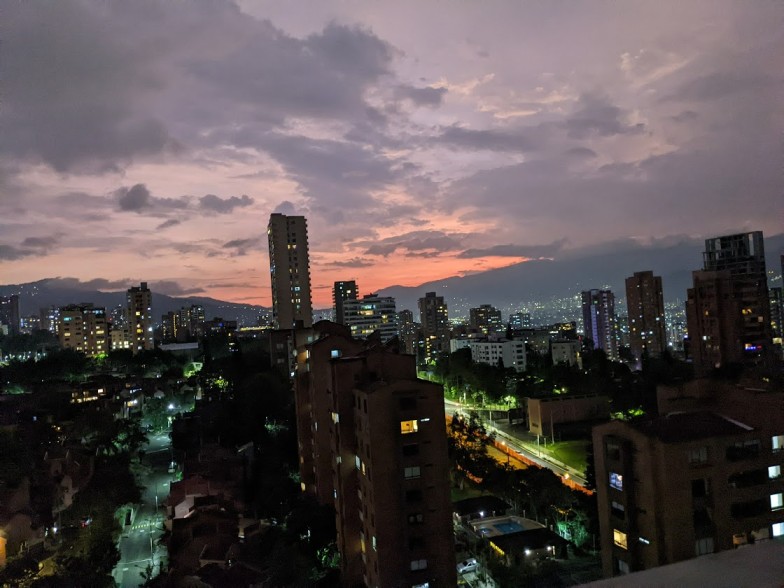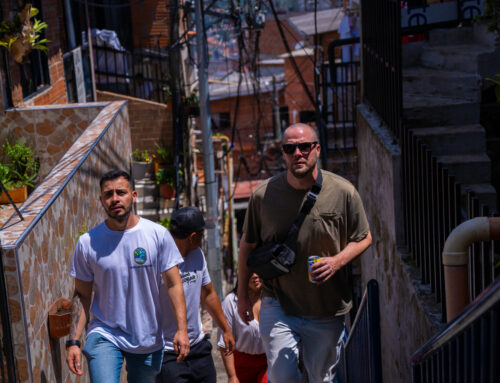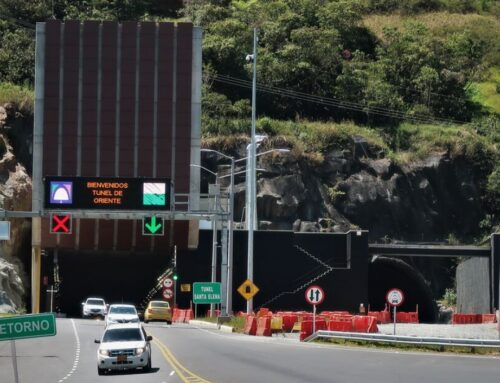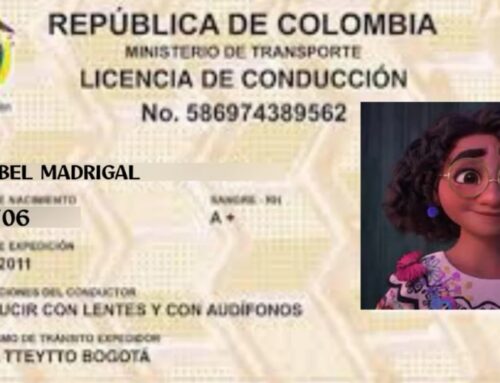
There’s a lot to admire about Medellín, whether you’re a tourist or a long-term resident. As Colombia’s second-largest urban agglomeration, it offers a lot more than just a huge population and plenty of sight-seeing opportunities. It also plays an important role in the country’s drive for a stronger economy, better urban development, and higher academic and medical achievements. In fact, in 2013 Medellín was actually named the “most innovative city in the world” by the Urban Land Institute for its advances in social development, education, and politics.
That’s the view from 30,000 feet, anyway; if you look at it from a more personalized point of view, you’ll see just how unique this historic city really is. Many residents are part of the city’s Paisa culture, for example; they’re known for their Spanish accents, warm hospitality, and flavorful cuisine. The city’s municipal calendar is marked by a number of festivals and holidays that are closely tied to the region’s history, and as you walk through the city’s many plazas you’ll see the works of prominent artists on display. If you want to learn more about Medellín (both past and present), just keep reading for an in-depth look at this colorful city.
The history of Medellin: an overview
The city of Medellín as we know it today has undergone many changes since it was founded in 1616, by Spanish Conquistador Francisco de Herrera Campuzano. The city’s initial name was “San Lorenzo de Aburrá”, and was located in what is currently the Poblado comuna. In 1675 the name was changed to “Villa de Nuestra Señora de la Candelaria de Medellín”, and finally to “Medellín” around 1813, when it was also declared the capital of the Antioquia region.
By the time the Industrial Revolution had arrived in South America, Medellín was enjoying the benefits of both gold and coffee production. The Thousand Day’s War (which lasted from 1899 to 1902) dampened the city’s industrial development, but didn’t directly affect the region. Shortly afterwards, Medellín’s Chamber of Commerce was founded; this connected the city to other regions within the country, and even to commercial interests outside of Colombia.
At around the same time, Medellín’s famous textile trade was beginning to take shape. Coal was discovered just south of the city, and hydroelectric plants were built – these helped solidify the city’s growing status as a hub of industry. Art and literature also took root in Medellín, thanks to its prestigious universities and numerous artists’ clubs.
The 1950s saw the creation of a “Medellín Master Plan”, which expanded the city and created Colombia’s first metropolitan area. Canals were laid out, settlements were planned, and a new industrial zone was established. By 1973, the city had just over 1 million residents, and was expanding to meet neighboring cities. This led to problems with overpopulation, crime, and widespread unemployment in the 80s and 90s. As you’ll see, though, this period has not defined what Medellín is today.

Present-day Medellin
Even though the city was struggling in the last two decades of the 20th century, it still had a solid foundation of industrialization and urban development. The Medellín Master Plan had already given the city its own metro system, and further public transport systems continued to be developed (including public buses, gondolas, and an escalator).
If you visit Medellin today, you’ll be able to see numerous plazas, libraries, ecological parks, malls, cultural centers, museums, and more. Yes, there are still issues with unemployment, crime, etc., but it’s clear that Medellín has continued to grow and improve over the years, and is likely to keep doing so for the foreseeable future.
Medellin’s Demographics
Medellín’s 2023 population is estimated to be around 4,487,550, and that’s expected to rise over time. This includes the city’s urban area, plus adjacent suburban populations. The last official census was taken in 2005, with subsequent estimates being provided by the UN World Urbanization Prospects.
The city proper covers just over 380 square kilometers, with an estimated population density of 10,351 people per square kilometer in 2018. There are more women than men in Medellín, with women making up 52.9% of the population, and men representing 47.1%. As with most urban centers, the majority of its residents (71.2%) are between the ages of 15 and 64. 18% of the population is under age 15, and 10.9% is 65 or older.
Just like the rest of Colombia, most of Medellín’s population is white or Mestizo (84.2%). The second-largest ethnicity you’ll find in the city is Afro-Colombian, which represents 10.4% of the population. Another 3.4% are Amerindians, with the remaining 2.1% coming from a mixture of other races and ethnicities.
Culture
One of the most notable facets of Medellín’s culture is the presence of Paisa culture, which is one of the five main regional cultures in Colombia. The name comes from the term “paisano”, which is Spanish for “fellow countryman”. Paisas typically speak quickly and softly, are always ready to smile, and are known for their love of parties, music, soccer, poetry, and striking a good bargain at the market. They take great pride in keeping their city clean, and they’re generally Catholic (like most of Colombia).
The city holds quite a few festivals throughout the year, some of which are internationally recognized.
- The Book and Culture Festival revolves around culturally significant books and art, and takes place in September at Medellín’s Botanical Garden. Exhibitors join from around the world, and contribute to many different genres. The festival’s aim is to promote an interest in reading, and is sponsored by the city’s mayor.
- The International Tango Festival is, as you might expect, all about Medellín’s tango culture. One of the festival’s highlights is the Tangovía, which involves participants dancing in the streets together.
- The Christmas lighting in Medellín is one of the city’s main international attractions, with National Geographic listing it among the top 10 cities to visit for its Christmas lights. Millions of lights are put up around the city, and the season is also celebrated with light shows and similar events.
- The Festival of the Flowers is another famous event, held in late July and early August. It’s filled with various activities, with the main one being the “Desfile de Silleteros”. This colorful parade features artistic creations by flower growers, which they carry on their backs as they march through the city.
Any discussion of a city’s culture wouldn’t be complete without mentioning its cuisine. Medellin doesn’t necessarily have any classic dishes to call its own, but it is a place where many regional dishes have been developed and perfected. The most popular dishes include:
- Arepas – Small rounds of bread, made from white corn flour and toasted. They’re often served with other dishes, eaten with various fillings, or topped with cheese and fried eggs as a simple breakfast.
- Bandeja Paisa – A huge plate filled with chorizo, chicharrones, beans, rice, a fried egg, avocado, salad, patacones, and arepas.
- Cazuela de frijoles – A red bean stew with chicharrones, avocado, baked banana, and corn, served with rice and an arepa or two.
- Calentado Paisa – a dish based on a mixture of fried rice, beans, baked bananas, and chicharrones, and topped with avocado, arepas, and a fried egg.
Geography
Medellín is located in the Aburrá valley, at 1,500 meters (or 4,900 feet) above sea level. The Medellín River flows through the city, which is composed of 16 districts (or comunas), five townships (or corregimientos), and 271 neighborhoods (or barrios).
Climate
Known as the “city of eternal spring”, Medellín’s climate is temperate and mild year-round. In fact, you’ll barely notice the passing of the seasons in this city. The main difference between summer and winter is an increase in rainfall, with the wettest months being April, May, October, and November. The average yearly rainfall is 111 inches, with May usually seeing the most rain at an average of 13.5 inches.
Rainfall aside, there isn’t much humidity. Daytime high temperatures are usually in the 70s or 80s, with nighttime temperatures rarely going below the upper 50s. The city itself may enjoy sunny weather and pleasant temperatures, but that’s partly due to its location in a valley. The neighboring towns located farther up in the mountains also get the benefit of warm daytime temperatures, but the nights tend to be chillier.
Laws and government in Medellin
Medellin is governed by legislative and executive branches, with the city’s mayor being elected for a four-year term. The city has fairly low tax rates, so its ambitious policies for economic and social development are largely funded by the Empresas Publicas de Medellin. This is the city’s main supplier of energy, and it’s owned by the municipal government; 30% of the profits are used to fund Medellin’s administrative budget.
Aside from Medellín’s extensive infrastructure projects, residents also benefit from the Medellín Solidaria program. It’s meant to be an improved version of Colombia’s Familias en Accion program, which gives cash grants to impoverished areas. All in all, there are over 100 different social programs in Medellín, including those that provide technical advice and business support in the poorest areas of the city. Disadvantaged businesses can also obtain low-interest microloans, which not only helps the business owners, but also their communities by provided much-needed jobs and services.
Medellin’s Crime Statistics
In the 80s and 90s, Medellín was not a safe place – it actually used to be the most dangerous city in the world, mainly due to heavy cartel activity. Since then, however, the homicide rate has dropped by an astonishing 95%, and extreme poverty has been reduced by 66%. Cartels still play a role in the city’s crime rates, though, with over half of violent deaths attributed to gang activity. Even so, Medellín is actually safer than US cities such as Detroit or Baltimore.
The main risk in Medellín is petty crime, such as pickpocketing or scams. Thieves will target any valuable item they can get to, such as wallets, purses, phones, cameras, etc.; this is pretty typical for any South American country.
Scammers generally target tourists, because residents already know what these individuals are up to. Scams run the gamut, from impersonating police officers to extort bribes, or simply “gringo-pricing” tourists, which involves overcharging anyone who may not know the standard rates for goods and services.
That’s during the day, anyway; at night, the city becomes significantly more dangerous. Mugging is common, especially in the following areas:
- La Sierra
- Barrio Trinidad
- Parque Periodista
- Parque San Antonio
- Parque de las Luces
- Parque Lleras
- Comuna 13
Medellin’s Economy
As you’d expect from the second-largest urban center in Colombia, Medellin plays a powerful role in the country’s economy. The Antioquia region is responsible for about 20% of Colombia’s exports, with the Metropolitan Area of Medellin contributing 11% of the country’s total economy.
Medellín has a number of significant economic products, including:
- Refined oil
- Chemical products
- Agricultural products
- Textiles
- Steel
- Confections
- Foods and beverages
- Pharmaceuticals
- Flowers
The fashion industry has also made its mark in Medellin, both on its economy and its culture; each year, the city hosts Colombiamoda, the biggest fashion show in Latin America. Between the city’s central location, and the fact that it produces so many valuable products, it serves as the headquarters for a number of national and international corporations.
Colombia’s first business cluster was created in Medellin, with the support of the City Administration and the Chamber of Commerce. It’s composed of 21,000 companies in Medellin’s Metro Area; together they make up 40% of employment, 40% of exports, and 25% of the region’s GDP. Most of these companies are in the business, tourism, construction, fashion design, textile, and electricity generation sectors. In the future, the Medellín Cluster hopes to expand into health services, which is a key sector in the city’s economy.
Medellin’s Healthcare
Medellin leads the way in health care in so many industries, so it’s no surprise that it does the same with its health and research centers. It offers some of the most advanced surgical operations in Latin America, let alone Colombia; the city’s dental centers and health clinics are known for pioneering top-notch services in crucial medical areas. For example, the Clinical Cardiovascular Santa Maria, the Pablo Tobon Uribe Hospital, and the University Hospital San Vicente de Paul have all been internationally recognized for their advancements in organ transplantation.
According to the America Economia magazine, Medellin has eight out of 100 top-rated hospitals/clinics in Latin America. The San Vicente Foundation hospitals, which are specialized health centers, are the only medical centers outside the United States to receive the Silver Category of LEED certification. As for research in the field of medicine, the UPB University, and CES University, and the University of Antioquia have all been recognized for their notable advancements.
Medellin’s Unemployment rates
Unemployment and poverty in Medellin have been mostly shrinking over the past decade, with a couple of exceptions. The overall trend has been a reduction in key markers like unemployment rates, poverty, and extreme poverty. Unfortunately, according to DANE (Colombia’s National Statistics Department), Medellin is one of the country’s most unequal cities, having a GINI coefficient of 0.506. Even though the city’s unemployment rates have followed national trends by gradually lowering year by year, the latest reports show that they’re still slightly above the national average.
The story is somewhat better when it comes to the reduction of poverty. In 2002 the poverty rate was 49.7%; by 2014, it was 14.7%. During that same time span, the rate of extreme poverty dropped from 12.3% to 2.8%.
Just like with most of the world, these trends were sharply reversed during the worst of the COVID-19 pandemic. Due to widespread shutdowns of businesses, as well as the loss of the tourism industry, unemployment skyrocketed to 21.6%. However, these numbers eventually reversed as businesses opened back up in 2021 and 2022.
Education System in Medellin
The city has historically had many private schools and colleges, most of which were either run by foreign institutions, private organizations, or the Catholic Church. However, the last couple of decades have seen a greater emphasis on public education, with schools and libraries being built in poorer areas. There are also non-governmental organizations that advocate for the education of underprivileged children. Medellín’s schools include:
- Colegio San Marcos
- Colegio Cumbres
- Insituto Jorge Robledo
- San Jose de la Salle
- Colegio Fontan
- Colegio Colombo Britanico
- Colegio Calasanz
- Colegio St. Ignatius Loyola
As for universities, Medellin is well represented with several prestigious public universities. The most important ones are:
- Colegiatura Colombiana
- Remington University Corporation
- Universidad Nacional Abierta y a Distancia
- CES University
- Servicio Nacional de Aprendizaje SENA
- Saint Thomas Aquinas University
- Engineering School of Antioquia
- University of San Buenaventura
- University of Medellín
- EAFIT University
- Pontifical Bolivarian University
- National University of Colombia
- University of Antioquia
These universities are obviously attended by Colombian students, but they attract students from all over the world as well. Some of them only attend for a semester or two as foreign exchange students, while others decide to graduate from their chosen university.
Urban development
Even Bogotá can’t keep up with Medellín’s urban development, especially with the number of skyscrapers that have either been completed, or are in the works. In October 2016, Medellín had 410 high-rise buildings, 10 skyscrapers, 119 building construction sites, and another 48 buildings in the planning stage. The city is also continuously expanding its public transport system, such as the city metro or the bus lines. In 2013, the Wall Street Journal awarded Medellín its “Innovative City of the Year” title, picking it over Tel Aviv and New York City.
For the last couple of decades, one of the municipal government’s objectives has been to promote social equity through well-designed urban policies. The first step was focusing on areas with the greatest economic and social issues, but there were several other clear guidelines that helped the city identify which projects to invest in.
- Culture and education should have a framework of infrastructure and public spaces in which to grow.
- Urban projects should integrate social, cultural, and physical components that would improve the lives of the people using them.
- Projects should be accessible through the Integrated Metropolitan Transport System.
- Programs and projects should have the ultimate goal of making Medellín an educated city.
These projects took many different forms, with many of them becoming the library parks mentioned below.
Libraries, parks, and plazas throughout the city
Medellín is full of spaces that are great for relaxation, such as libraries, parks, plazas, and even “library parks” – libraries next to extensive green spaces, usually located in underprivileged areas.
Libraries/library parks in Medellín include:
- Ricardo la Rotta Caballero Library
- Hiroshi Naito Library
- Leon de Greiff Library
- Public Pilot Library
- EPM Library
- San Javier Library Park
- Bethlehem Library Park
- La Quintana Library Park
- Doce de Octubre Library Park
- Las Estancias Library Park
- Guayabal Library Park
- San Cristobal Library Park
- San Antonio Library Park
There are quite a few more libraries in Medellín, 29 of which are a part of the Medellín Metropolitan Area Library Network.
Medellin has no shortage of parks either, many of which are home to fountains, sculptures, scenic walking trails, and more.
- Berrio Park
- Bolivar Park
- Bethlehem Park
- El Poblado Park
- Laureles Park
- Barefoot Park
- Explora Park
- Wishes Park
- Bicentennial Park
- Arvi Ecotourism Park
- North Park
- Juan Pablo II Park
- Los Deseos Park
Plazas are a significant part of many Latin American cities. They often commemorate historic events or figures, and they’re the sites of all kinds of events, from family picnics to political protests. The most well-known plazas in Medellín include:
- Plaza Cisneros
- Botero Plaza
- Zea Plazuela
- Freedom Square
- Plazeula Nutibara
- Plazuela San Ignacio
- Plazuela de la Veracruz
The takeaway
Medellín is a city with a historic past, a colorful present, and an optimistic future. There are flaws, just like with any city, but it’s quite clear that Medellín and its inhabitants have overcome many hurdles to get where they are today. Regardless of which metric you look at, almost every one will show improvement compared to years before. People don’t love Medellín for its great statistics, though; they love it because its history lives on in the city’s culture, its people, and its plans for the future.
Disclosure: Some links on Medellin-Tours.com may earn us affiliate commission, at no cost to you. Affiliate links are a way for us to earn a commission if you purchase a tour we recommend through Viator for another provider.




